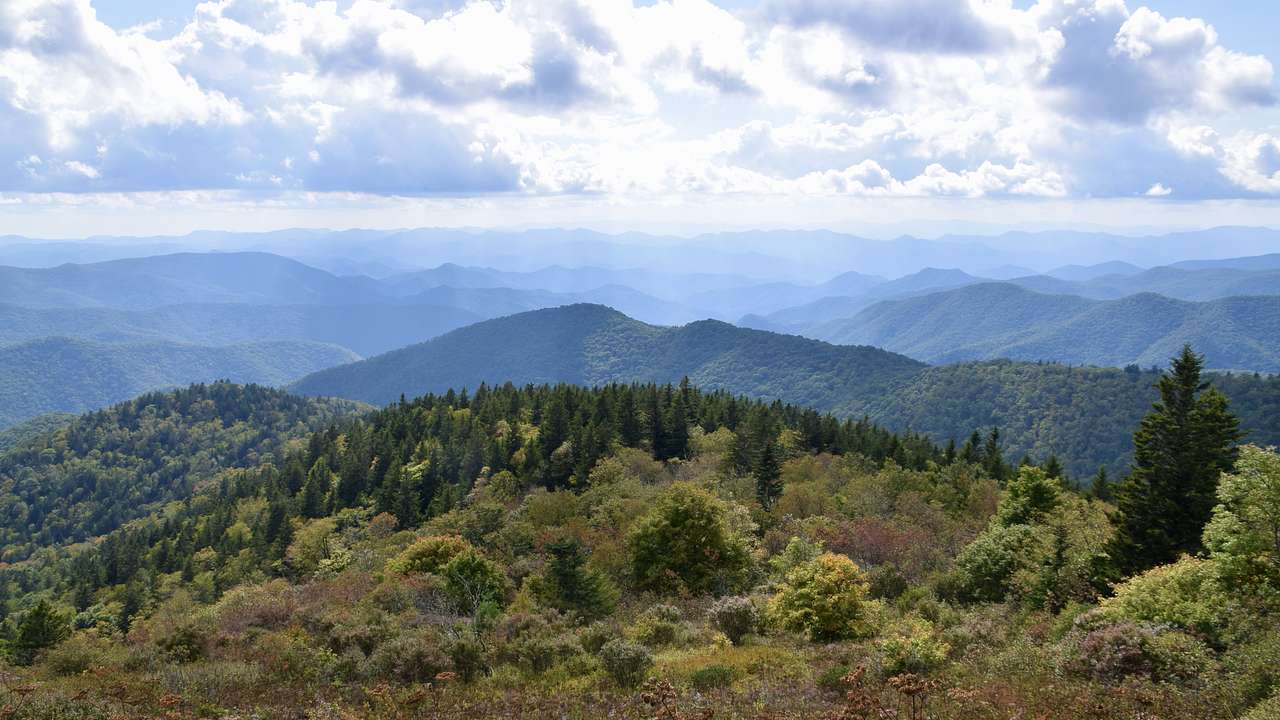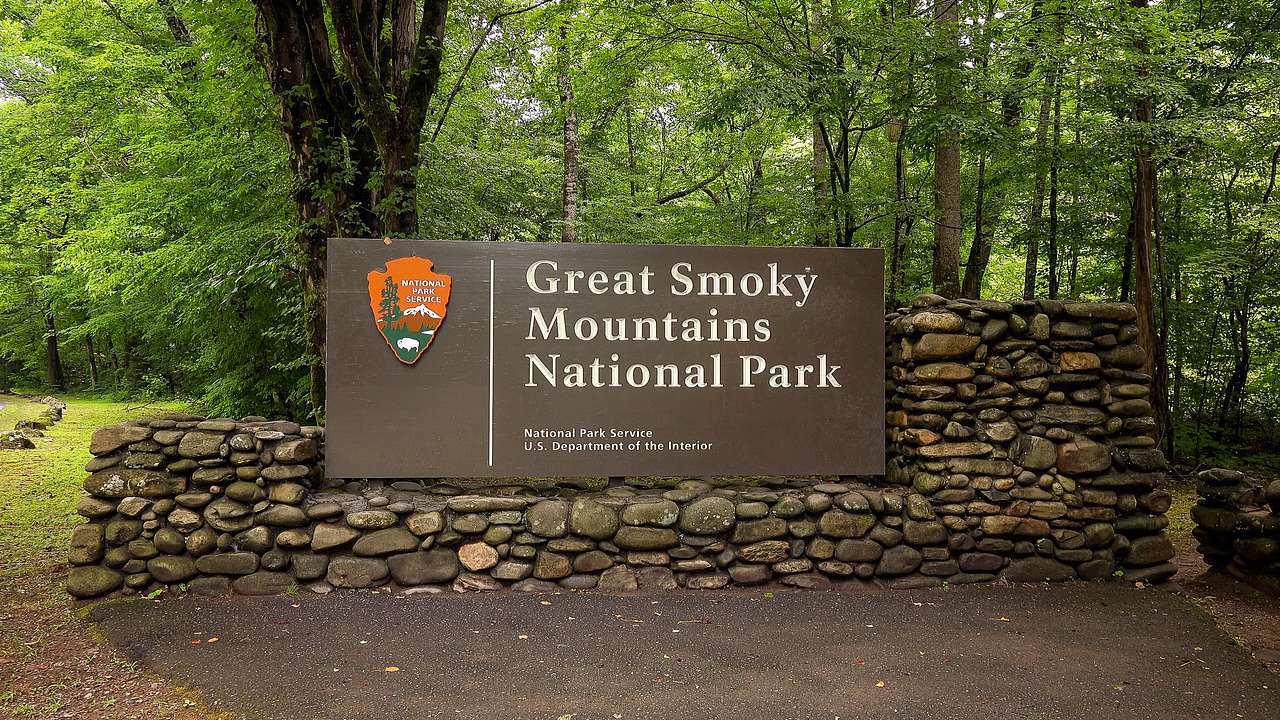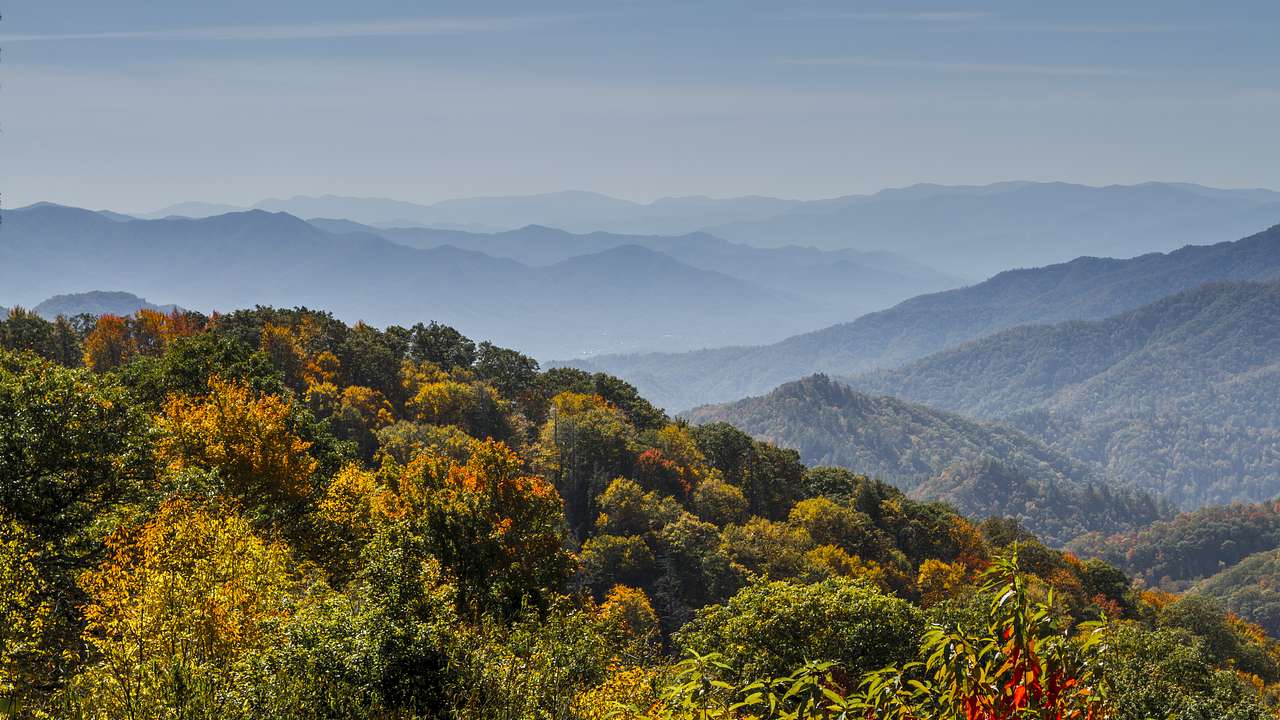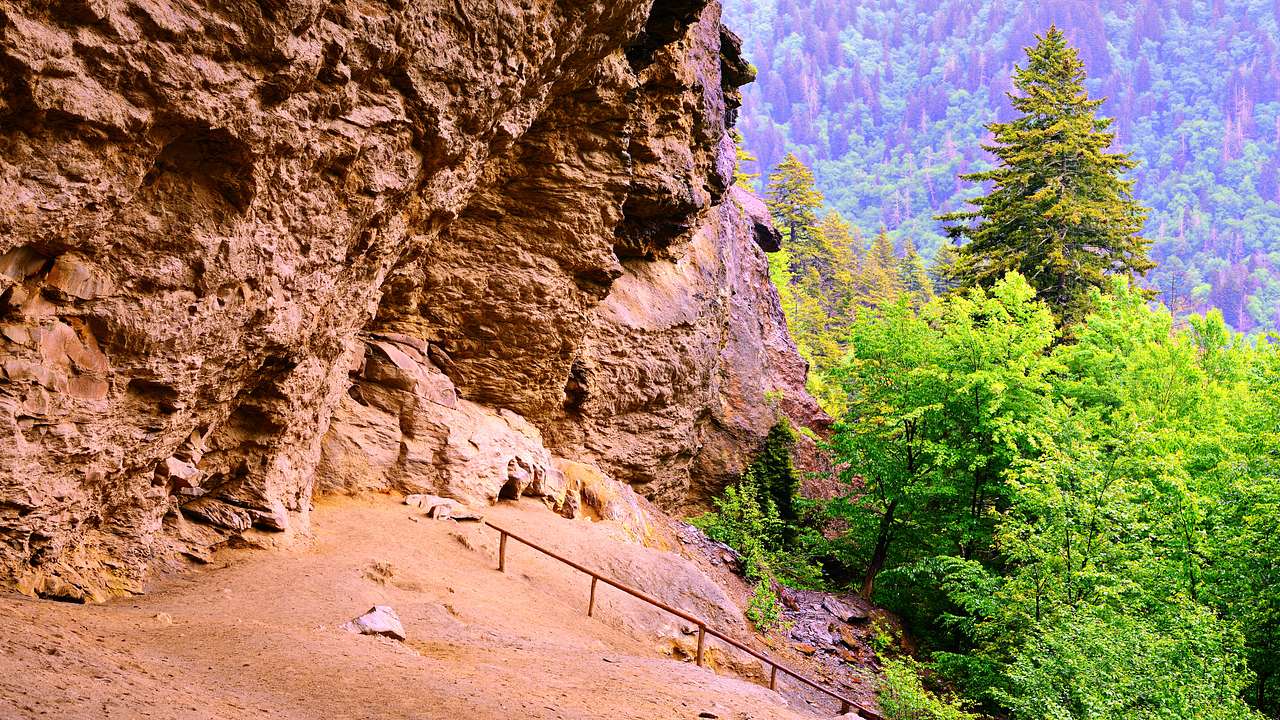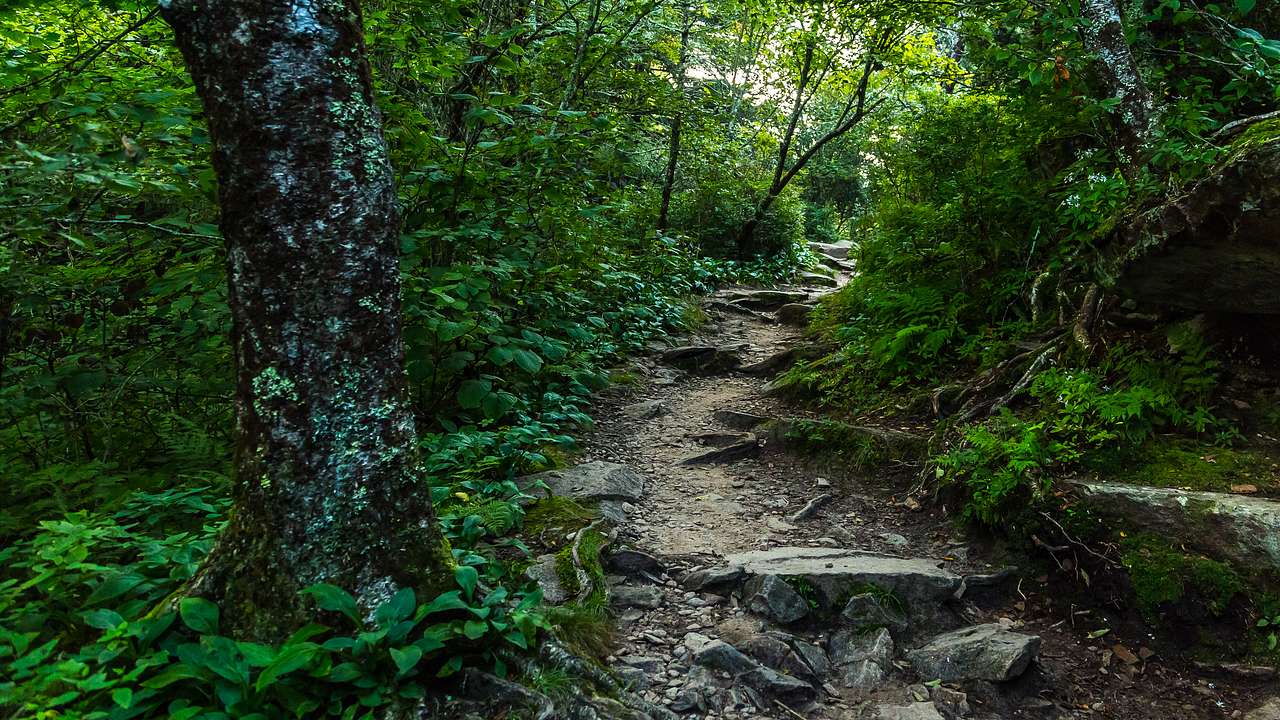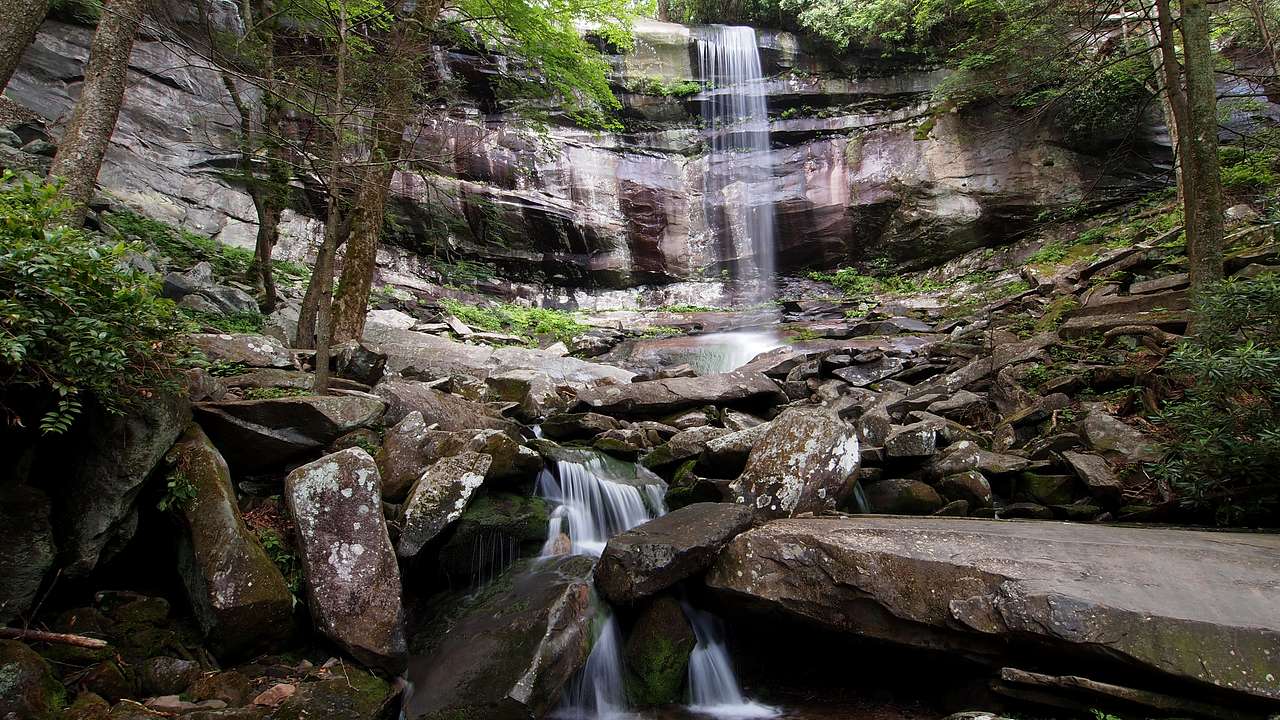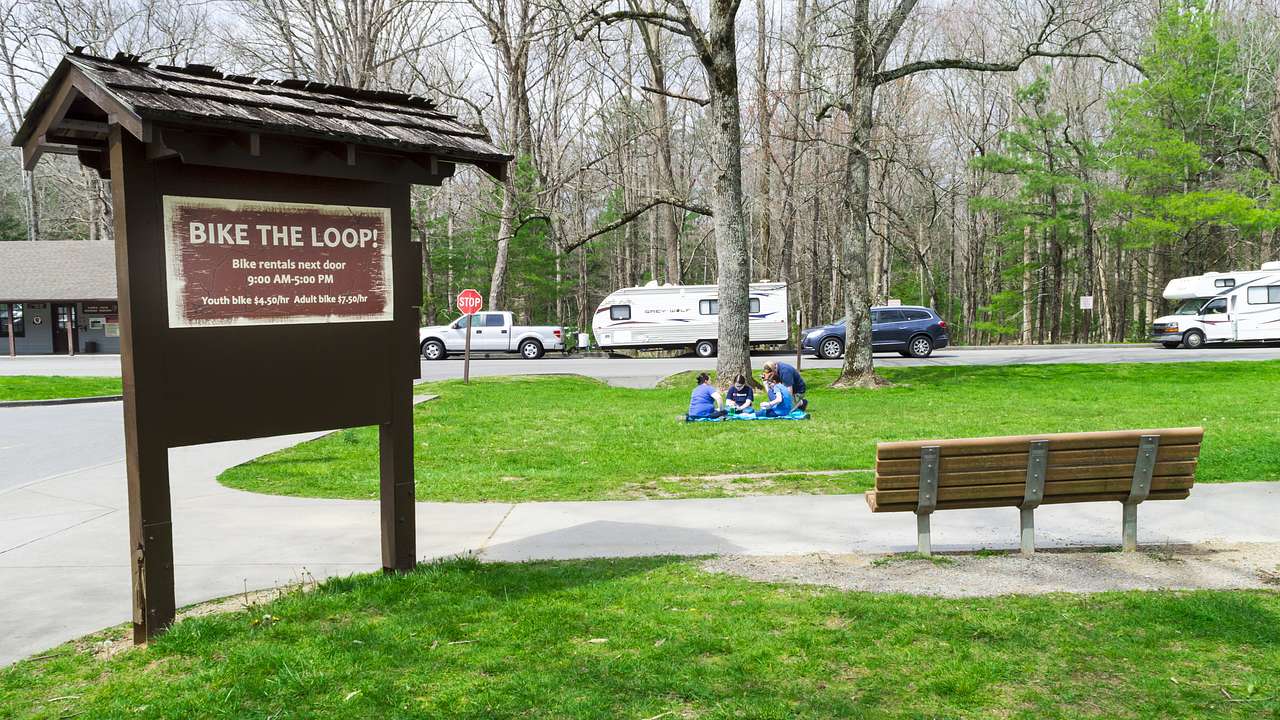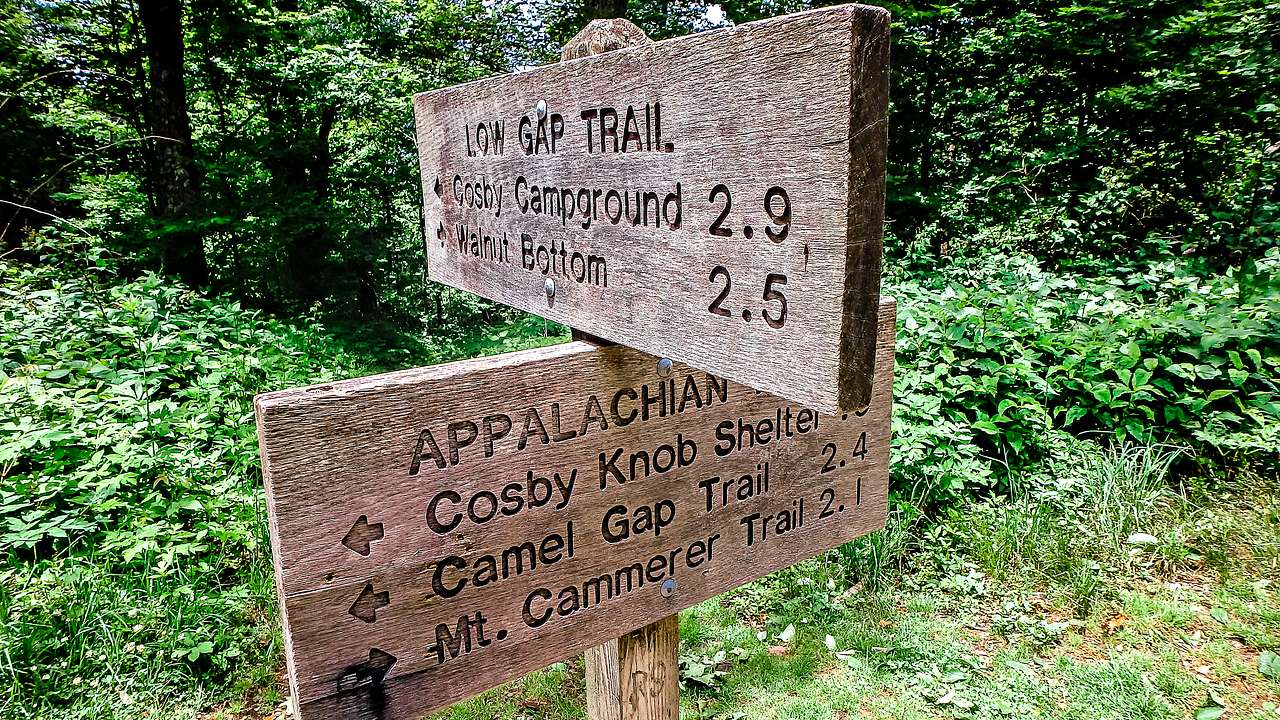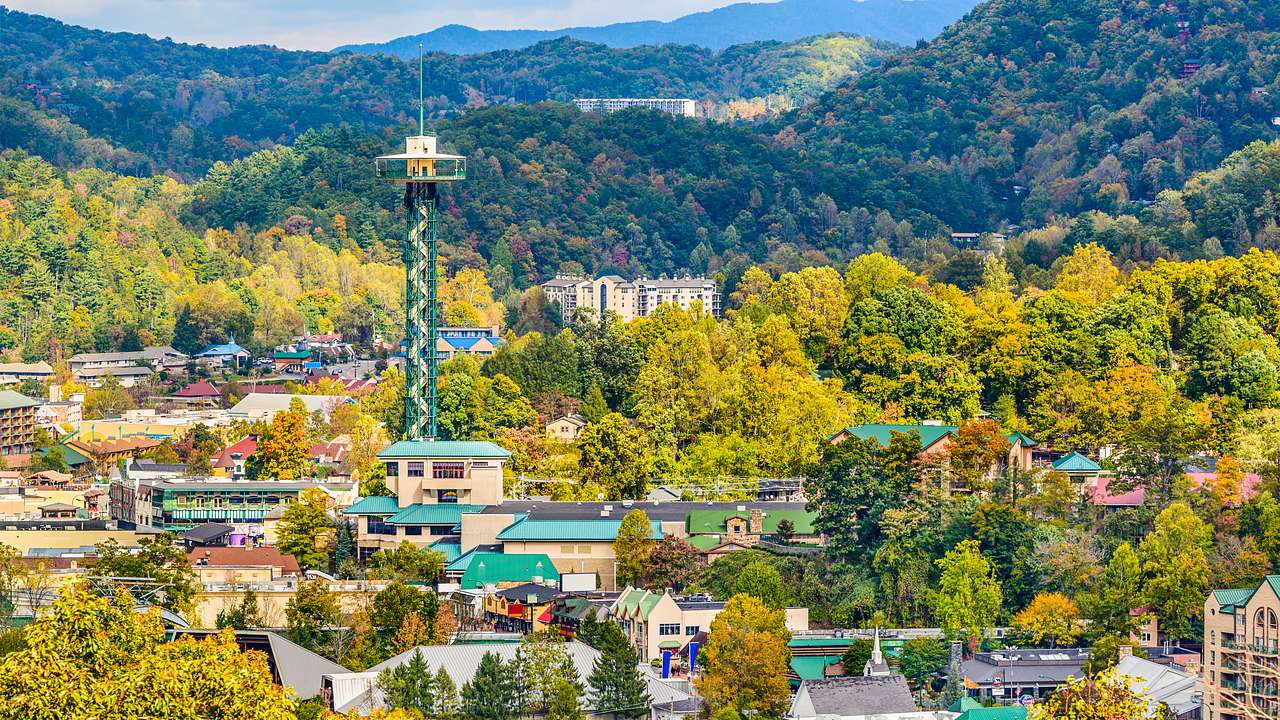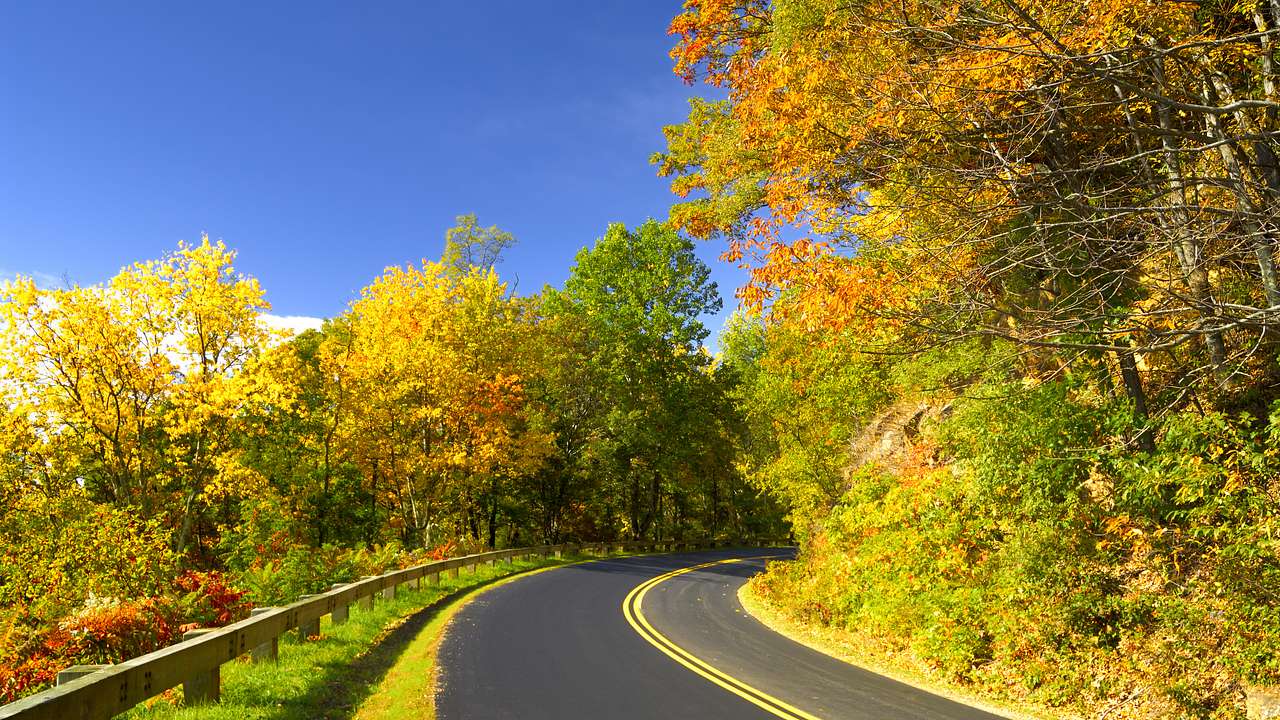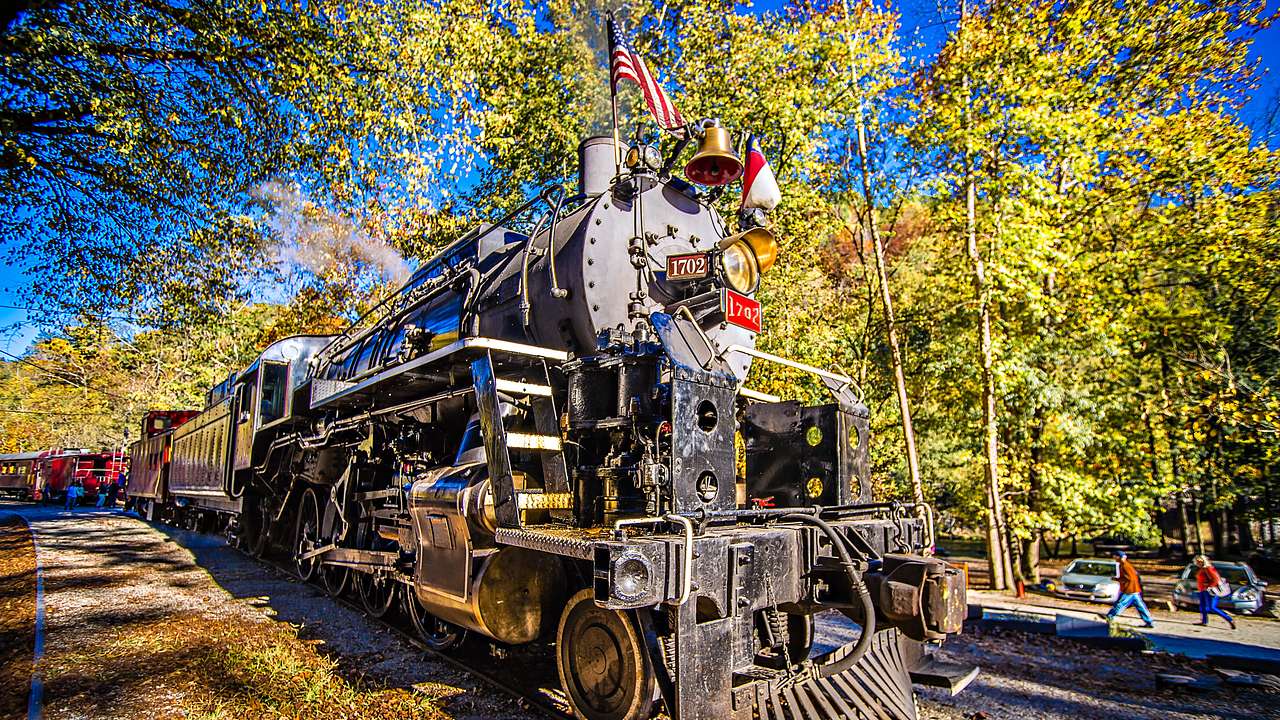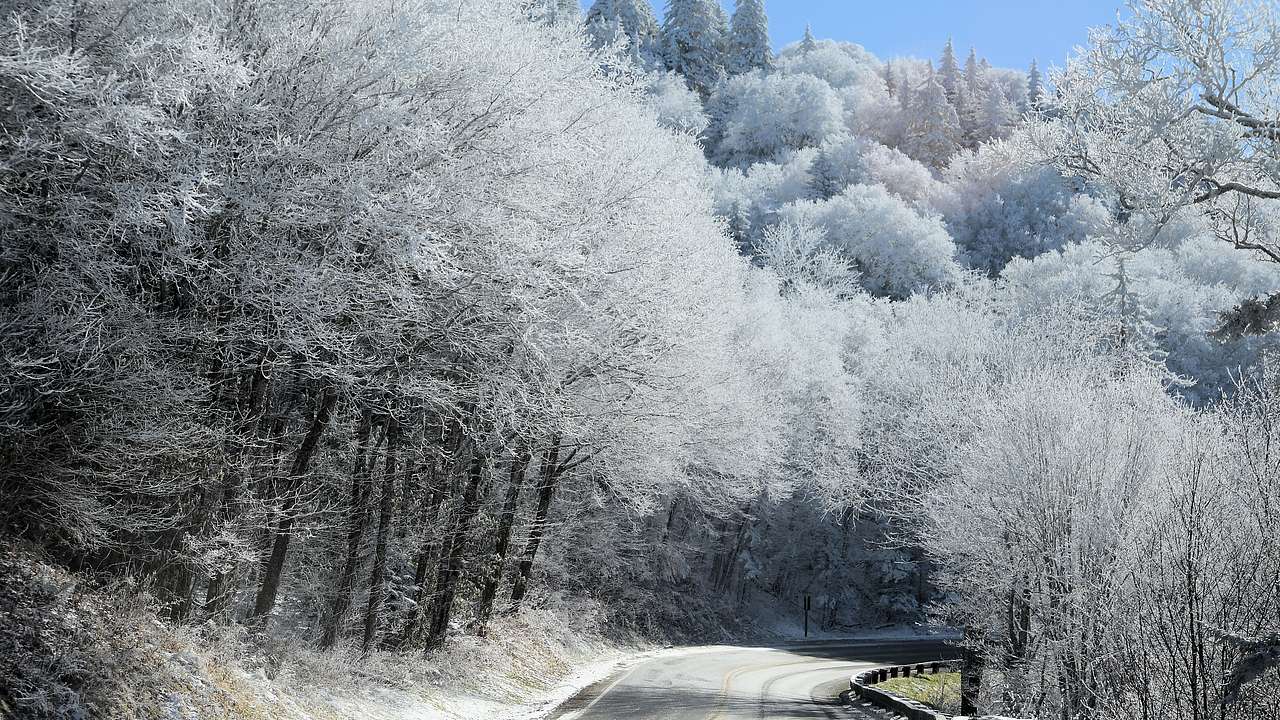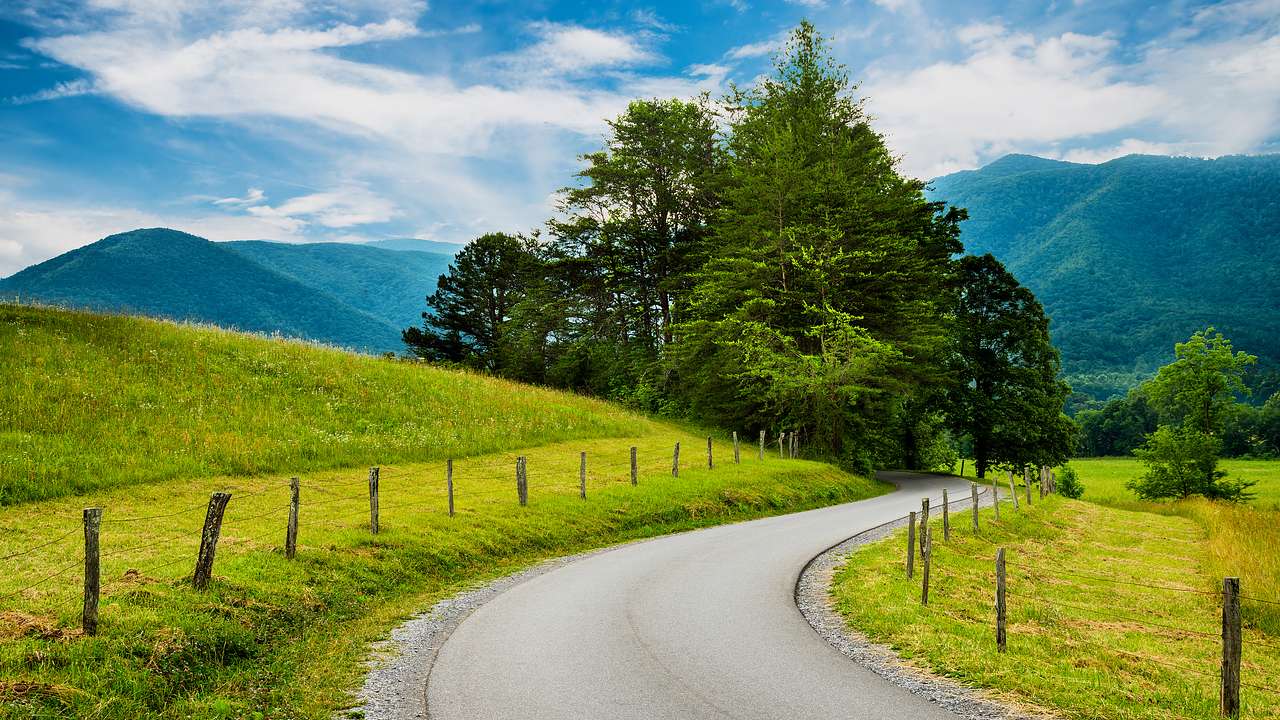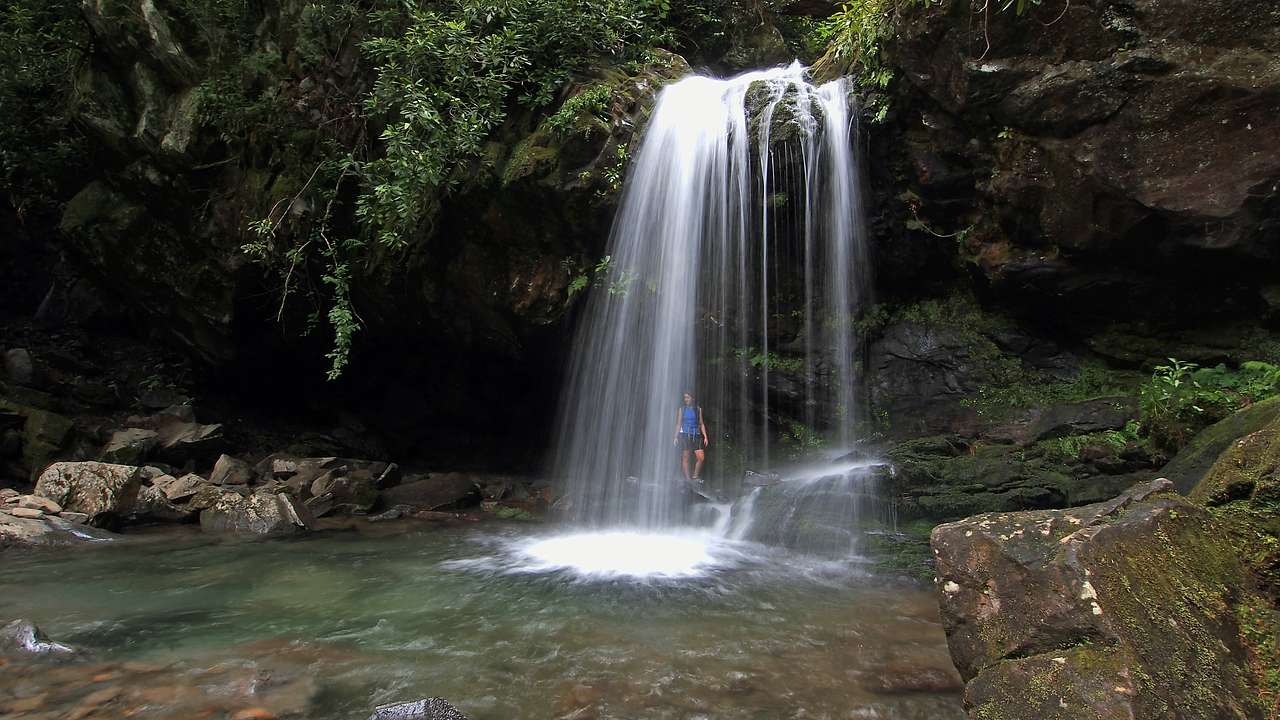Best Time to Visit Great Smoky Mountains National Park
Destguides may receive commissions from purchases made through affiliate links in this article.
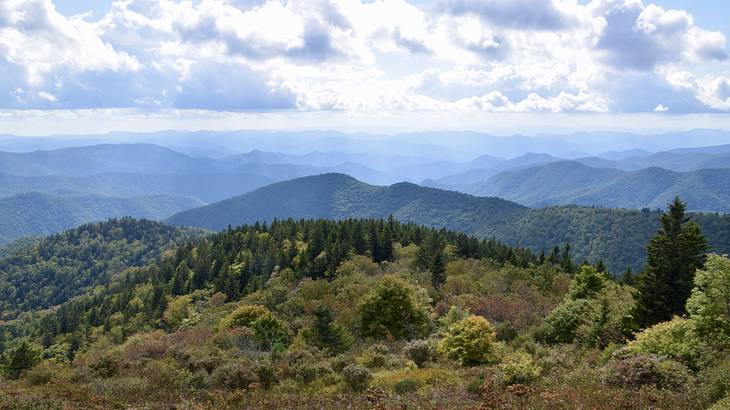
Straddling North Carolina and Tennessee, Great Smoky Mountains National Park sprawls over 522,00 acres of towering mountains, sparkling waterfalls, and lush forests. Welcoming over 14 million visitors a year, Great Smoky Mountains National Park is continuously one of the most visited National Parks in the US.
A variety of wildlife resides within the park, but none are as famous as the 1,900 resident black bears that call the park home. Great Smoky Mountains National Park is one of the largest protected areas for black bears in the eastern US. Visitors delight (from a distance, of course!) at the sight of bears around the Smokies.
Every season offers a different experience in the Smokies, from crowds and weather to even wildlife sightings. Whether you're planning a trip for summer vacation or winter break, read on to learn the best time to visit Great Smoky Mountains National Park!
Heading to Great Smoky Mountains National Park and planning last-minute?
To make the most of your visit to Great Smoky Mountains National Park, we recommend you book accommodations and experiences soon. We've pulled together top suggestions below.
🏨 Top accommodations in Great Smoky Mountains National Park
- Country Cascades Waterpark Resort (under $100 USD a night)
- Margaritaville Island Hotel (rated highly)
- Quality Inn Cherokee (relax by the pool)
☂️ Top tours and experiences in Great Smoky Mountains National Park
- Three-Hour Nantahala River Fully Guided Rafting Experience (rated highly)
- Arctic Circle & Northern Lights Tour From Fairbanks (very popular)
- Great Smoky Mountains National Park Self-Guided Driving Tour
- Cades Cove Sightseeing Self-Guided Driving Audio Tour
- Scenic Blue Ridge Parkway Self-Guided Driving Audio Tour
Best Time to Go to Great Smoky Mountains National Park
-
Great Smoky Mountains Vacation Planning Questions
- When is the best time to visit the Great Smoky Mountains?
- What are the best hikes in Great Smoky Mountains National Park?
- When is the best time to hike the Great Smoky Mountains?
- What are the best waterfalls in Great Smoky Mountains National Park?
- Where are the best campsites in Great Smoky Mountains National Park?
- What are the best RV parks near Great Smoky Mountains National Park?
- What are the hotels near the Great Smoky Mountains?
- How to get to Great Smoky Mountains National Park?
- Are there airports near Great Smoky Mountains National park?
- When is the best season to visit Great Smoky Mountains National Park?
- When is the least crowded time to visit the Great Smoky Mountains?
- When is the most crowded time to visit the Great Smoky Mountains?
- Weather, Prices, and Crowds in the Great Smoky Mountains
Great Smoky Mountains National Park Best Time to Visit Tips Video
Check out our highlights video of Great Smoky Mountains National Park best time to visit tips.
Great Smoky Mountains Vacation Planning Questions
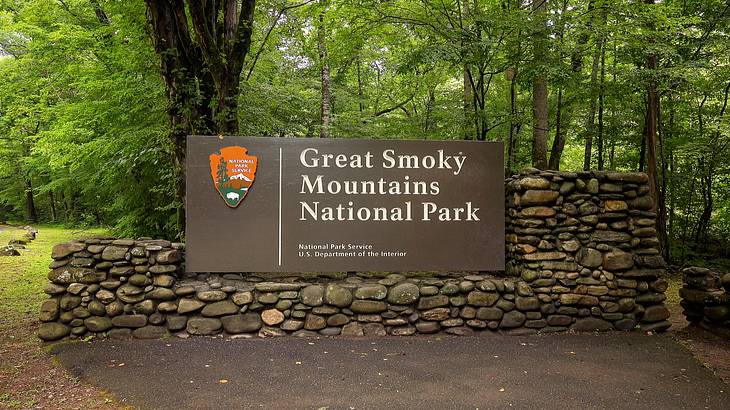
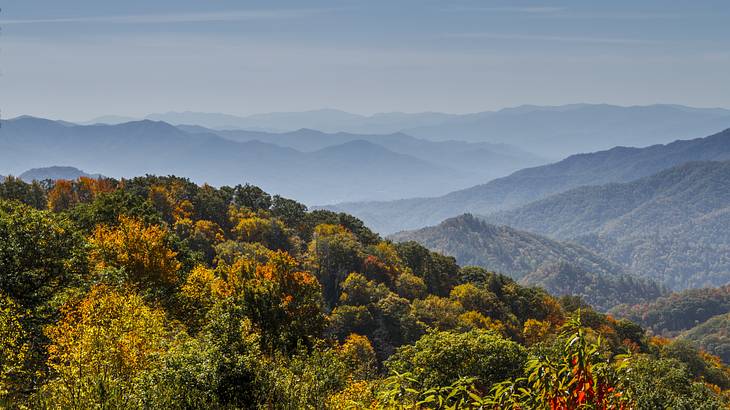
When is the best time to visit the Great Smoky Mountains?
Fall (September to December) is often considered the best time of year to visit Great Smoky Mountains National Park. This time of year is marked by cooler weather, fewer crowds, changing leaves, and more wildlife activity.
As summer crowds dissipate and temperatures drop into the 60-degree Fahrenheit range, hiking becomes much more enjoyable during the fall. If you visit the Great Smoky Mountains in October, you will also be treated to a vivid display of fall colors and increased bear sightings!
The Smokies' resident bears are most active in October as they constantly forage for berries and nuts to prepare for winter hibernation. But, of course, always keep your distance and admire these big guys from afar.
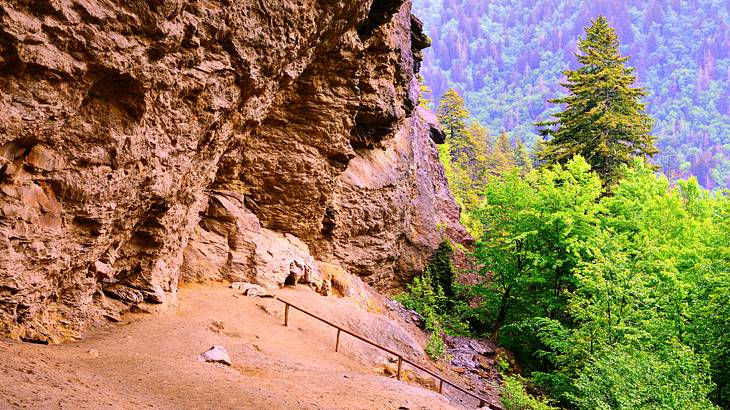
What are the best hikes in Great Smoky Mountains National Park?
The Smokies are a hiker's paradise with a whopping 150 trails to choose from, one of the highest number of options among national parks on the East Coast. A great trail to try is Alum Cave Bluffs, a five-mile trail that offers stunning cliffside views.
Another wildly popular hiking trail is Andrews Bald. This 3.6-mile trail is a bit of a strenuous climb, but the stunning vistas at the top make it all worthwhile. The trail is surrounded by wild berry bushes that are the bears' favorite foraging spot, so hikers should be "bear aware" at all times.
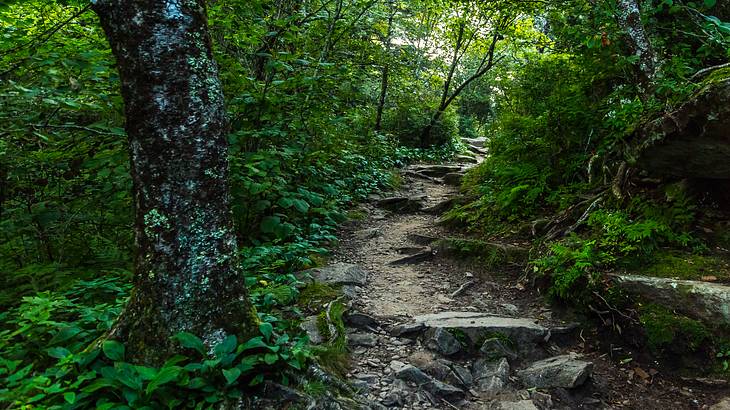
When is the best time to hike the Great Smoky Mountains?
If you're wondering when to visit Great Smoky Mountains National Park for hiking, look no further than late summer to early fall. The weather from August through October is comfortable and in the 50s to the 70s degrees Fahrenheit range.
The trails are also much less crowded, with summer travelers returning home during this time. If spotting a bear is on your bucket list, early to mid-fall is also the best time to see them as they forage nonstop in preparation for winter.
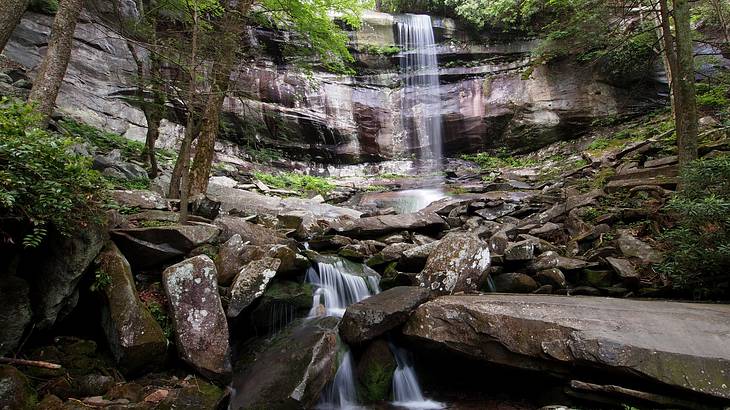
What are the best waterfalls in Great Smoky Mountains National Park?
There are over 40 waterfalls in the Great Smoky Mountains, some over 100 feet high, and Rainbow Falls is one of the most popular. It takes about three to five hours to hike to it, but you are rewarded with views of an 80-foot cascade of roaring water. Some sunny days will see a giant rainbow mist surrounding the falls, hence this waterfall's name!
For a shorter hike, make your way to Mingo Falls. This half-mile trail leads you to one of the tallest waterfalls in the park. An impressive 120-foot-high veil of water crashes down the side of a steep rock wall and into Mingo Creek. This waterfall is definitely one of the most stunning in the park.
Do you love waterfalls and craft beer? If so, you can book a waterfalls and breweries tour to visit multiple waterfalls and breweries on the same day.
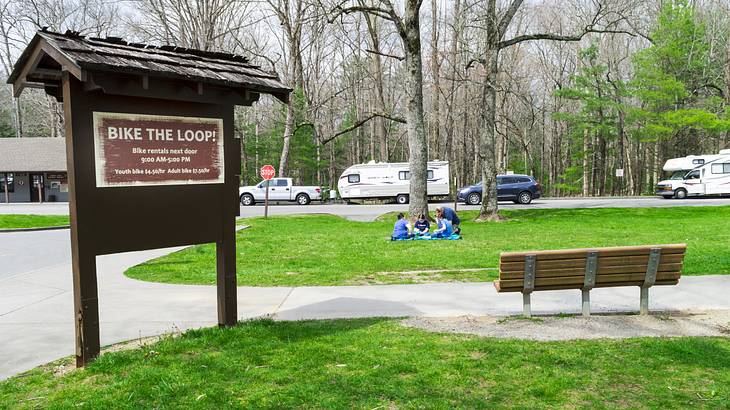
Where are the best campsites in Great Smoky Mountains National Park?
There are ten different campgrounds in Great Smoky Mountains National Park, plus opportunities for backcountry camping with a permit. Cades Cove Campground is often at the top of the list of the best campgrounds in the Smokies.
This area is close to the Cades Cove Loop, where much of the park's wildlife can be spotted. Bears, deer, wild turkeys, and coyotes are frequently seen in the open meadows of Cades Cove.
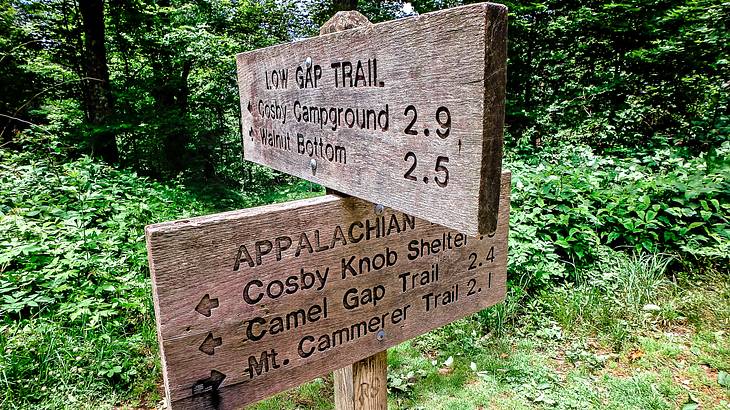
What are the best RV parks near Great Smoky Mountains National Park?
While RVs are allowed at some campgrounds inside Great Smoky Mountains National Park, several RV parks are also in proximity. Smoky Bear Campground and RV Park is one of nearby Gatlinburg's most highly rated RV parks.
This RV park features sites with full hookups (water, sewer, electric, cable, and wifi), fire rings, and picnic tables. Amenities such as showers, laundry facilities, a kitchen, and a pool are on offer as well. It's also conveniently located near shops and restaurants.
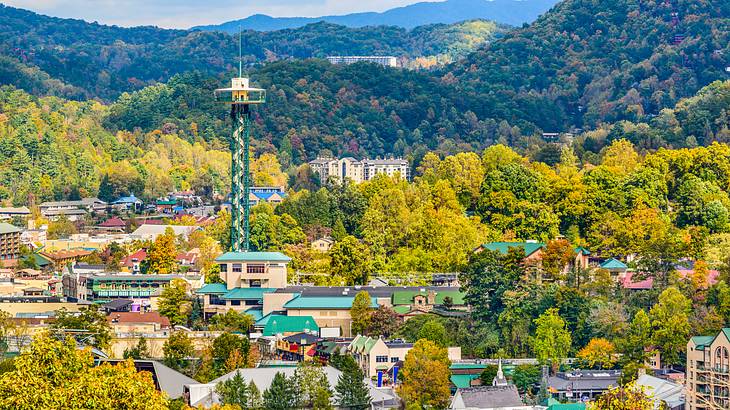
What are the hotels near the Great Smoky Mountains?
Known as the "gateway to the Smokies," Gatlinburg sits right outside Great Smoky Mountains National Park and has plenty of hotels to choose from. Booking a room at Gatlinburg River Inn or staying at Zoder's Inn are both excellent options. Best of all, these top-rated accommodation options have balconies offering gorgeous views that overlook the river.
For a more cozy stay, get a room at the Grand Cherokee Lodge. With its log cabins with fireplaces and hot tubs, it's sure to delight! Alternatively, staying at the Gatlinburg Mountain Inn is a budget-friendly option near the Smokies with all the comfy basics.

How to get to Great Smoky Mountains National Park?
If you are departing from Tennessee or the surrounding states, you can easily drive to the Great Smoky Mountains. The route is highly scenic, with mountain and valley views along the way.
If you have more time, then add a self-guided driving audio tour of the Blue Ridge Parkway to your road trip itinerary.
Visitors coming from further afar, will want to fly into one of the four airports surrounding the Great Smoky Mountains, which one will depend on your departure location and flight availability.

Are there airports near Great Smoky Mountains National park?
There are four airports in the vicinity of the Great Smoky Mountains, two regional and two international. The Knoxville McGee Tyson Airport and Asheville Regional Airport are located about an hour outside the Great Smoky Mountains. As domestic-only airports, they offer direct flights from major cities across the eastern US.
International airports offering a wider range of flights from cities across the US and abroad are the Charlotte Douglas International Airport and Greenville-Spartanburg International Airport. Both airports are over a two-hour drive from the Great Smoky Mountains.
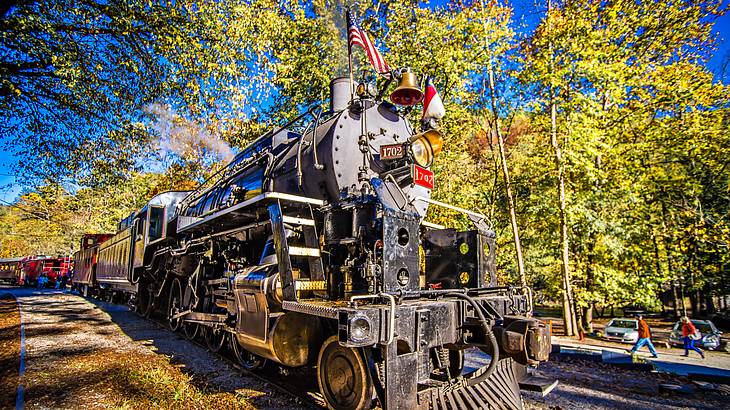
When is the best season to visit Great Smoky Mountains National Park?
Fall (September to December) is often considered one of the best times to visit the Smoky Mountains. During your visit, you'll experience cooler weather, fewer crowds, and gorgeous fall foliage. It's also a prime time to spot bears as they are constantly feeding to prepare for winter hibernation.
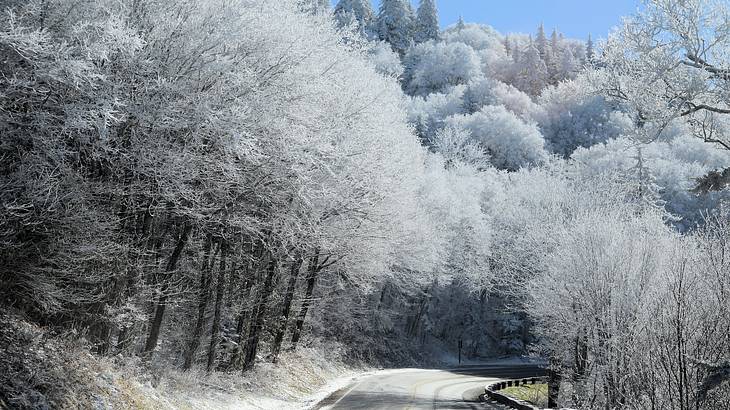
When is the least crowded time to visit the Great Smoky Mountains?
January and February have the lowest visitation rates at Great Smoky Mountains National Park. This time of year is the coldest, with temperatures dipping into the lower 20s degrees Fahrenheit.
Some campgrounds and other park amenities may also be closed during this time due to snowfall. However, if you're willing to brave the cold, January or February could be magical, with snow-covered forests and picturesque frozen waterfalls.
Additionally, if you're looking for the best time to travel to the Great Smoky Mountains on a budget, it's January or February. These months often have the lowest hotel prices of the year.
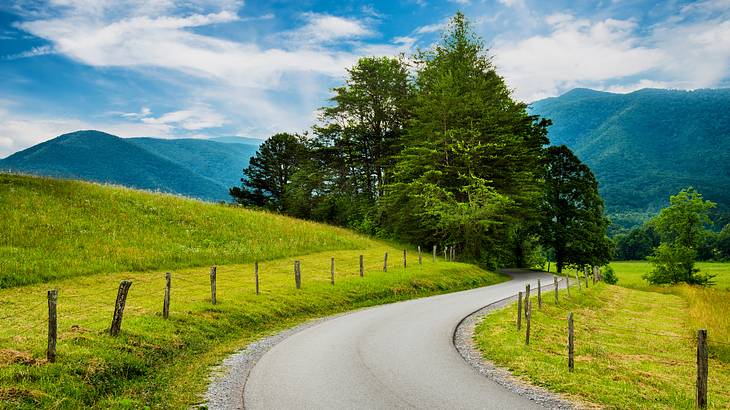
When is the most crowded time to visit the Great Smoky Mountains?
Summer (June to September) is, by far, the busiest time at this iconic Tennessee landmark. With schools on summer break, many families hit the road or take to the skies for nature trips and camping excursions.
Hotels, cabins, and campsites around the park and in nearby Gatlinburg are known to be reserved up to a year in advance for summer vacations. While it's still a beautiful time to visit, be sure to pack your patience as long lines, packed parking lots, and crowded trails are standard in the summertime.
Weather, Prices, and Crowds in the Great Smoky Mountains
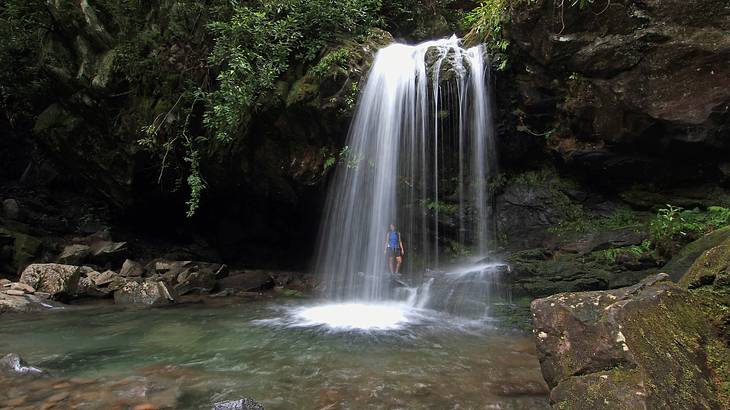
The Great Smoky Mountains in Winter
Winter (December to March) is the coldest and least crowded time in the Great Smoky Mountains. Temperatures range from the 20s to 50s degrees Fahrenheit with the potential for snowfall. Some campgrounds and trails close, but hiking and camping are not off the table if you bundle up warmly and stick to lower elevations.
You may see some bobcats and foxes out and about, but don't expect to spot a bear in winter. These big guys will be hibernating in their dens until spring.
However, if you aren't put off by the colder temperatures and lack of bear sightings, you can snag a great deal on places to stay. Except for the week of Christmas, hotel accommodation is at its lowest prices during winter.
Great Smoky Mountains in Spring
Spring (March to June) in Great Smoky Mountains National Park is a magical time filled with sunny days, blooming wildflowers, and lots of wildlife. It's still a bit chilly, with temperatures in the 30 to 60 degrees Fahrenheit range, but hiking is very doable.
During the Spring Wildflower Pilgrimage in April, you can take a guided nature walk to learn about the park's many plant species. Also, don't forget to keep your eyes peeled for bears emerging from their dens, some with new cubs!
Hotel pricing can be moderate to high in the spring, with dates closer to spring break and Memorial Day often being higher. Book at least two months in advance to get the best rates.
Great Smoky Mountains in Summer
Summer (June to September) in the Smokies is hot and crowded! Temperatures can reach well over 80 degrees Fahrenheit, and afternoon thunderstorms are common. Despite the heat and the crowd levels, summer is thought by many to be the best time to visit the Smoky Mountains, especially for families.
While exploring, you can take a break from the heat and crowds by going on a self-guided Cades Cove Loop sightseeing tour, which allows you to see wildlife and interesting landmarks.
Be sure to book your hotel early, as they tend to fill up quickly. You'll also find that hotels are priced higher in the summer, especially around the Independence Day holiday (July 4th).
Great Smoky Mountains in the Fall
Fall (September to December) is arguably the best time to visit the Smokies. Crisp fall temperatures (around 60 degrees Fahrenheit), colorful fall foliage, and wildlife sightings are the season's highlights. In addition, bears are active in the fall as they forage nonstop to prepare for winter.
For some fall food and fun, and to learn about Tennessee facts, check out the Smoky Mountain Harvest Festival or Townsend Grains and Grits Festival. Both take place in the fall to celebrate the season with Southern food, history, and music. Fall is also a great time to take a self-guided driving tour and marvel at the colorful foliage around the park.
Hotel accommodation around the Smokies is moderately priced during this time. Fall is a bit of a shoulder season with fewer crowds than in summer but more than in winter.
In Summary
Now you are ready for your Great Smoky Mountains adventure! From rugged mountain trails to sparkling waterfalls and meadows full of wildflowers, there is so much to see. No matter what season you visit, be sure to keep an eye out for wildlife and enjoy all the nature the park has to offer.
Give us feedback about this article
More visual stories related to this article:
Want to keep exploring?
Subscribe for discounts on tickets and hotels and our latest guides.
Thank you for subscribing
We will be in touch soon with discounts on tickets and hotels and our latest guides.
Want to keep exploring?
Subscribe for discounts on tickets and hotels and our latest guides.
Thank you for subscribing
We will be in touch soon with discounts on tickets and hotels and our latest guides.

